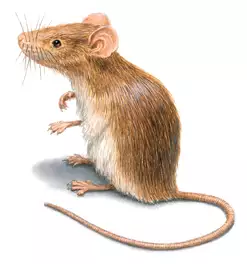- Contact
- 01211118453
- Send Email
- info@spider-eg.com
House Mice

House Mice
Facts, Identification & Control
Latin Name
Mus musculus
Appearance
What do they look like?

- Color: House mice are covered in short hair that is light brown or gray to black in color, with lighter bellies.
- Body: Their ears and tail also bear hair, although much less than their bodies.
- Size: Adult mice weigh approximately 12 to 30 grams and can grow up to 20 cm from the nose to the tip of the tail.
- Feces: Droppings are rod-shaped and pointed on both ends.
How Did I Get House Mice?
House mice can use even dime-sized cracks to gain entry into homes. They seek shelter indoors to escape inclement weather or predators like snakes and coyotes and to locate food sources. Cluttered attics and basements provide excellent hiding places for the pests to build nests and reproduce, while dirty dishes and unsealed pantry goods offer food sources. Wall voids and voids under cabinets are also likely places for mice to live.
How Serious Are House Mice?
Because house mice thrive under a wide range of conditions, are secretive and very cautious, they are hard to control. The pests are rarely apt to bite someone, but their presence can be harmful to human health.
Their droppings and urine contaminate food and if the population is not controlled house mice can cause contamination problems in places where they nest. Diseases that can be transmitted by house mice include lymphocytic choriomeningitis and food poisoning.
species causing the problems.
Depending on your specific situation, the SPIDER PMP may employ both non-chemical and chemical methods.
Some effective non-chemical control procedures your PMP will recommend include:
- Exclusion – sealing off sites that allow mice to enter a structure.
- Sanitation & debris – Your PMP will recommend using both inside and outside sanitation measures to help minimize available food and water that attracts and supports a mouse population.
- Traps – Many times your treatment plan will include using traps and other mechanical devices to kill or remove mice.
- Baits – Your PMP may also elect to use chemical products, such as rodent baits, that are formulated to kill mice.

